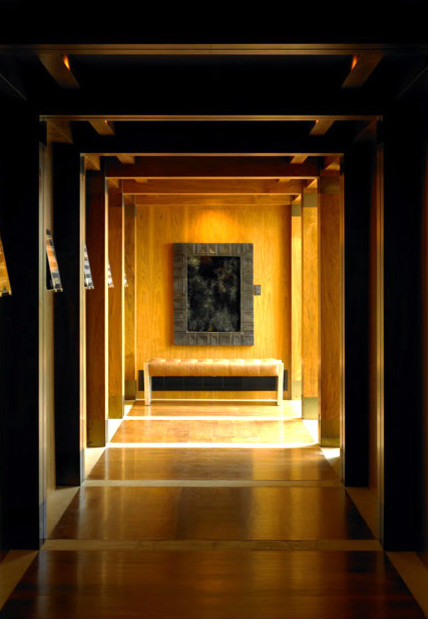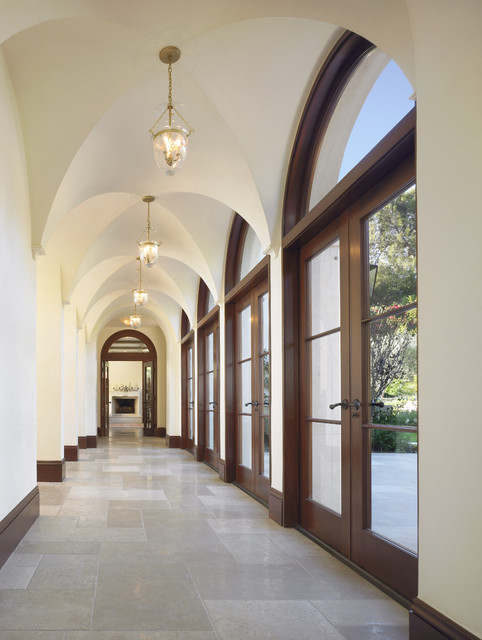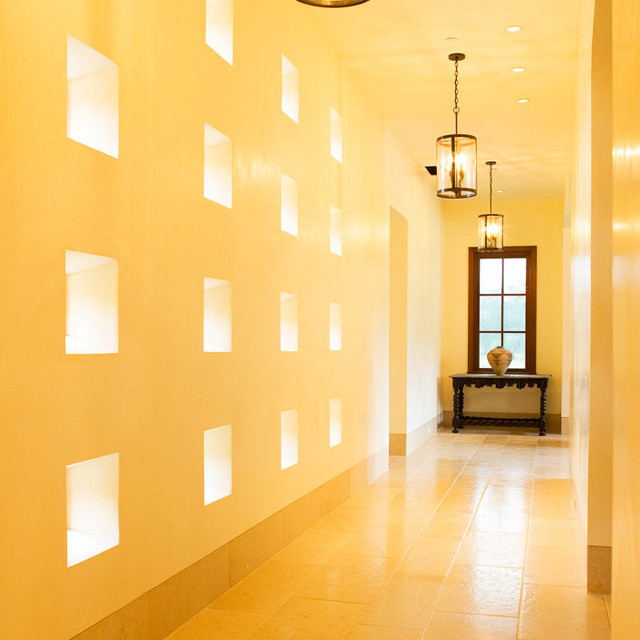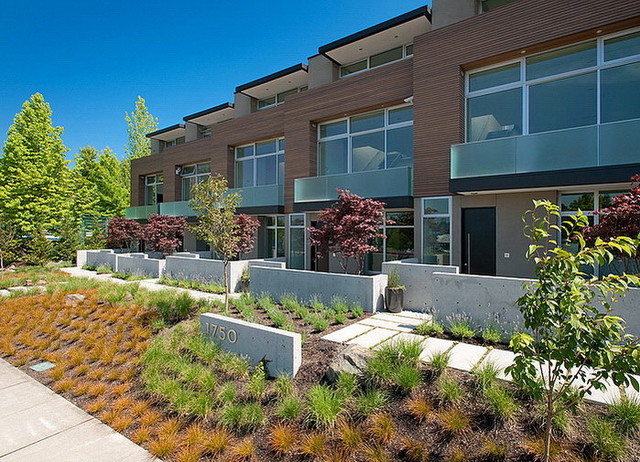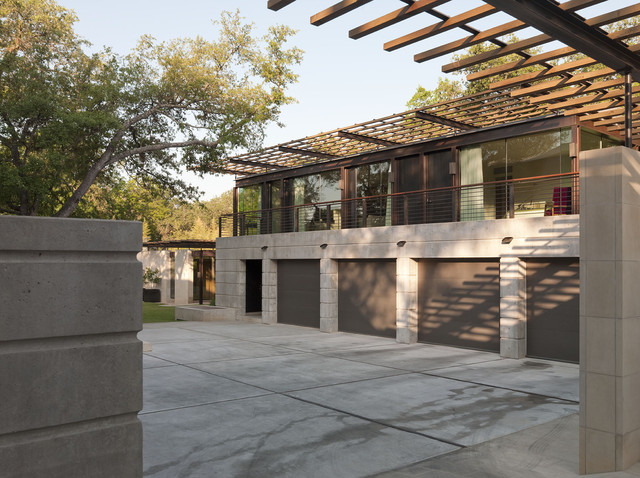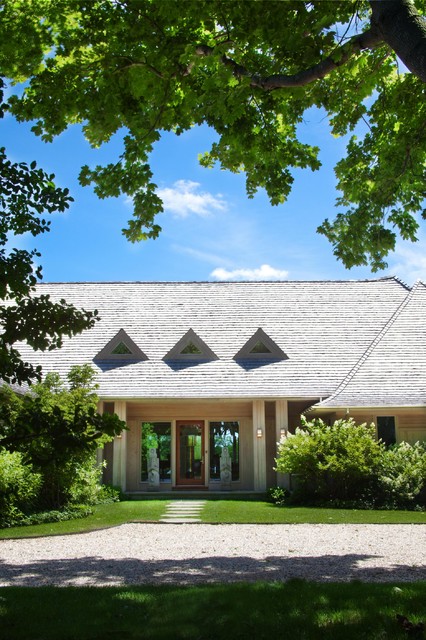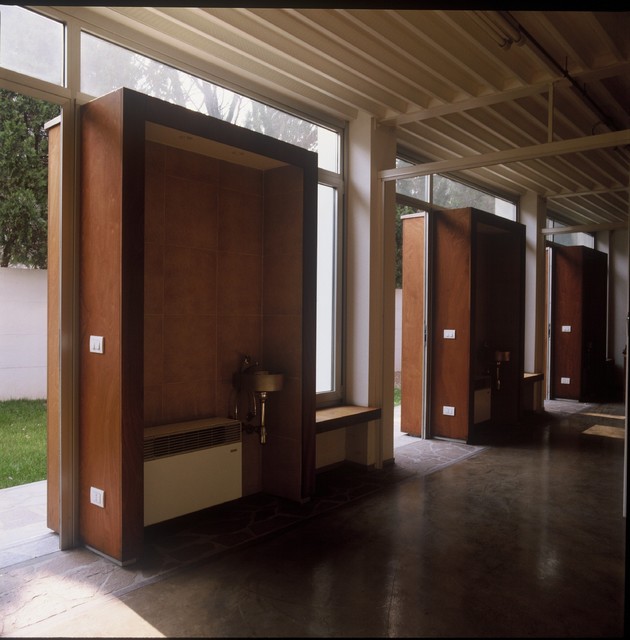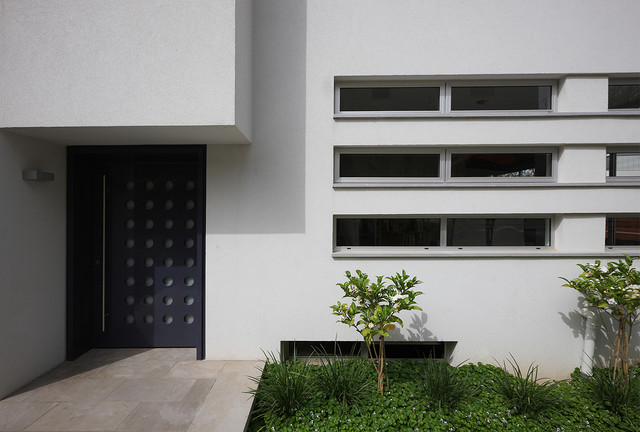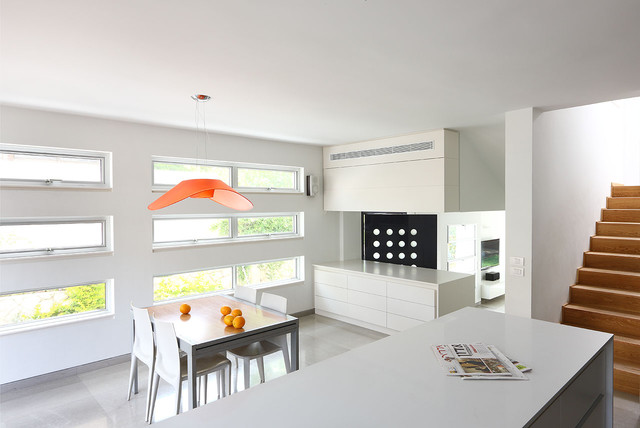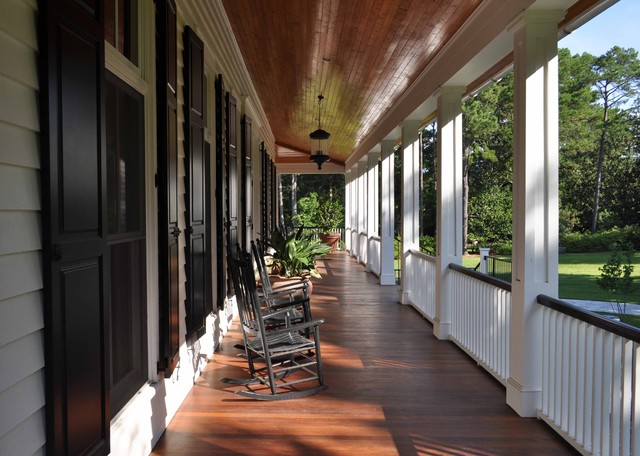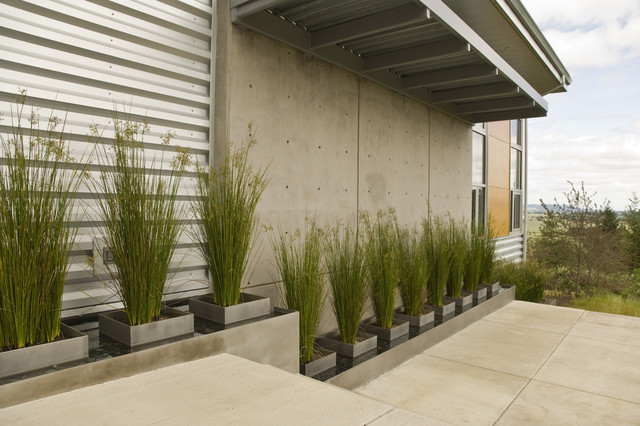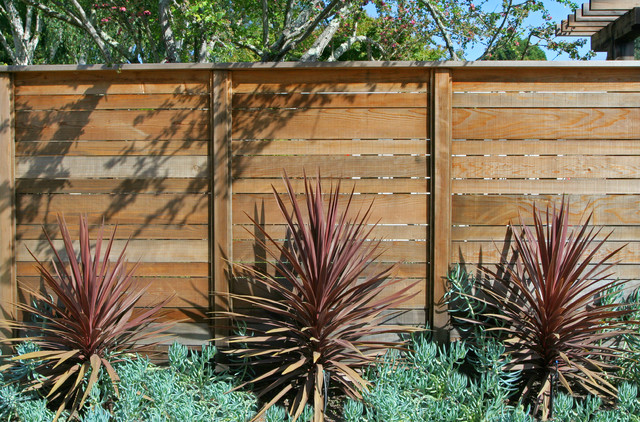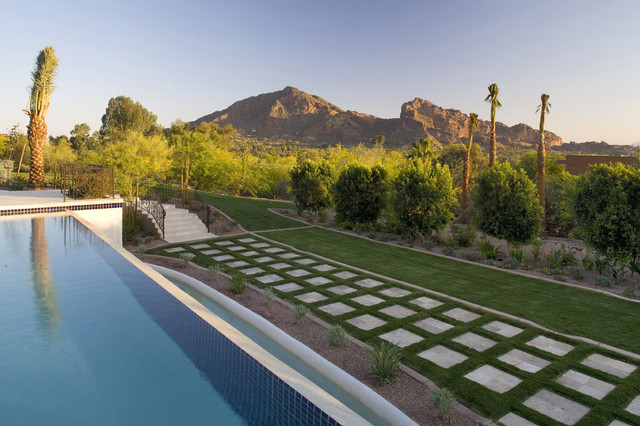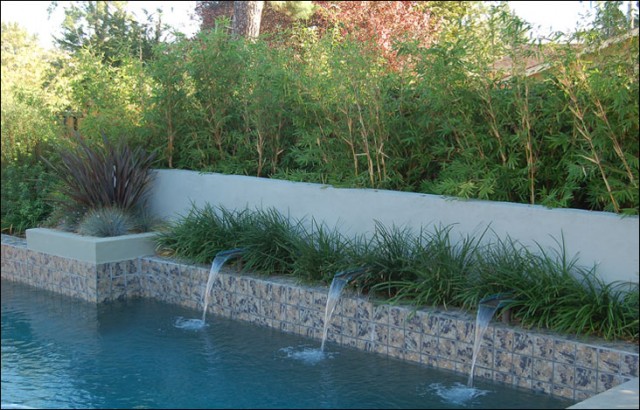Architecture's repetitions link our buildings with nature's familiar rhythms
|
by Pb Elemental
by Pb Elemental
|
|
This multi-family project illustrates repetition at the scale of
the building. A three-story module is repeated, but instead of simply
side-by-side, they step back from one another to increase privacy and
become individual houses within the larger project.
|
|
This house repeats different elements on its three floors, subtly
revealing the structure that underlies each. On the ground floor we see
garage doors with scuppers marking the columns between; above is a
set-back glazed wall with uplights on the steel mullions; on top is a
trellis whose cantilevered structure follows the same grid.
|
|
Windows are probably the most-repeated elements (minus materials
like bricks) in residential architecture. Modern architecture eschewed
the grid of openings found in most traditional dwellings, but repetition
can still be found in places like these three rows of stacked windows.
|
|
Inside, these three windows define one wall of a kitchen/dining
area. What outside was part of a larger wall comprises the majority of
this space. The windows are like a wall decoration in their own right.
|
|
This long porch benefits from the structural repetition on the
right and the windows on the left. Each helps break down the space, and
the structural bays help define smaller areas for seating.
|
|
Repetition is not limited to architectural elements; landscape can
of course play a part. In this example, tall grasses in square metal
planters march down the side of a house. The green softens the gray of
the corrugated panels and concrete.
|
|
These red succulents follow the rhythm of the fence posts, such
that the horizontal wood planks become a backdrop for the plants.
|
|
This pool area features stone pavers repeated in a grid. Pavers set
amongst grass may be a common technique, but it is an effective one for
the strong graphic it creates and the clear message that the surface is
for walking on.
|
|
A natural extension of the previous photo is to hide the source of
the water fountain. Yes, repetition is found in the three streams of
water, but when the fountain is off the repetition and rhythm (visual
and auditory) is gone. Ephemeral, indeed.
|
